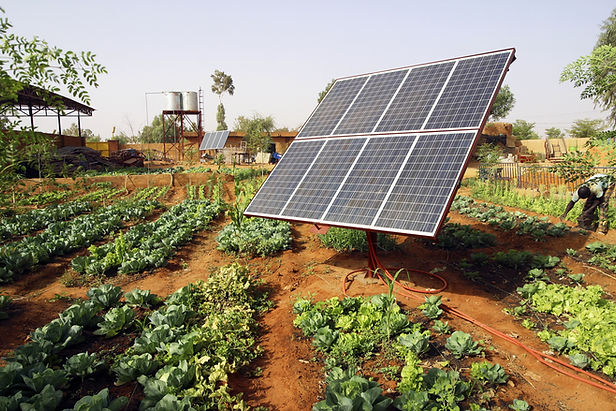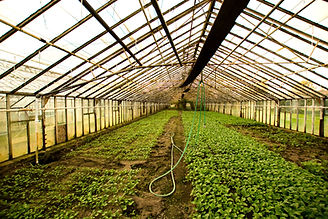
Farmer's Pride International

A Catalyst for Socio-Economic Transformation

An Agriculture Subsidiary of the Hunter's Global Network PTY LTD

农村发展:
Farmers Pride International 致力于赞扬非洲政府在减少年轻人离开农村到大城市或迁移到其他国家的人数方面所做的努力,为实现这一目标,它将致力于促进农业促进农村发展、年轻人的参与和农业价值链中的妇女来减少这一挑战。
农村发展是改善的过程 生活质量 和经济 福利 居住在 农村地区, 通常是相对偏僻和人烟稀少的地区。农村发展历来以 开发 土地密集型 自然资源 如 农业 和 林业。 学到更多:
农村发展传统上集中在开发土地密集型自然资源,如农业和林业。然而,全球生产网络的变化和城市化进程的加快已经改变了农村地区的特征。旅游业、利基制造商和娱乐业越来越多地取代资源开采和农业成为主要的经济驱动力。农村社区需要从更广泛的角度进行发展,这使得人们更加关注广泛的发展目标,而不仅仅是为农业或资源型企业创造激励。教育、创业、物质基础设施和社会基础设施都在农村地区的发展中发挥着重要作用。农村发展的另一个特点是强调本地生产的经济发展战略。与具有许多相似之处的城市地区相比,农村地区彼此之间具有很强的差异性。出于这个原因,在全球范围内使用了各种各样的农村发展方法。

活动领域
通过其技术和财政援助,Farmers Pride International 将协助国家努力确定与每个时期和地点的具体情况相适应的适当农村发展解决方案。将特别强调四个互补的活动领域:
a) 面向低收入农民的农村生产项目。他们的目的是通过将资源分配给处理阻碍或阻碍发展的特定限制的单一活动来帮助增加产量并提高小农的收入。
b) 综合农业发展项目。 这些项目旨在消除一种以上的生产和/或经济基础设施限制。他们的设计设想支持一个以上的部门组成部分,并包括有可能在直接受益者中扩大生产的低收入农民。
c) 综合农村发展项目。这种类型的项目在协调的基础上解决生产、经济基础设施和社会服务的限制。它们的设计需要对各种直接目标进行规范,并包括为两个或多个部门组成部分提供资金。就其性质而言,这些项目包括边缘地区的农村人口作为受益者,并努力开发他们的生产潜力,并找到将他们纳入国家社会经济活动的最佳方式。
d) 社会基础设施项目。这些项目致力于改善低收入农村社区的社会和组织条件,例如健康、卫生、农村教育、社区组织、培训等。
将努力协调城乡发展业务,促进农村人口中心的改善和配备生产和社会基础设施,以支持农村活动,使这些中心在非农业活动的定位、营销等方面发挥重要作用农村产品的加工和加工,以及为生产过程和生活在其影响地区的人们提供的各种支持服务。

Solar Energy for Agriculture Development.

Solar Irrigation and Internet Connectivity for Sustainable Development:
Agriculture remains the backbone of rural economies, yet many areas continue to struggle with access to essential resources and infrastructure. The adoption of modern technologies such as solar irrigation and internet connectivity can transform these communities, boosting productivity, fostering value addition, and opening pathways to global markets through free trade export zones. Here’s how these interventions can pave the way for a prosperous rural agricultural landscape.
Solar Irrigation: A Sustainable Solution for Increased Production
Irrigation is critical for consistent agricultural productivity, yet access to affordable and sustainable water pumping solutions remains a challenge for many rural farmers. Solar irrigation offers a practical and eco-friendly alternative to conventional methods, providing reliable access to water while reducing reliance on fossil fuels and grid electricity.
Benefits of Solar Irrigation
-
Cost-Effectiveness: Solar-powered pumps eliminate recurring fuel costs, making irrigation more affordable for smallholder farmers.
-
Sustainability: Utilizing renewable energy reduces carbon emissions and protects the environment, aligning with global climate goals.
-
Increased Productivity: Reliable irrigation enables year-round farming, even during dry seasons, leading to higher yields and diversified crops.
-
Scalability: Solar irrigation systems can be tailored to suit the needs of individual farmers or cooperatives, ensuring wide applicability.
Implementation Strategies
-
Training and Awareness: Educate farmers on the benefits and maintenance of solar irrigation systems.
-
Subsidies and Partnerships: Collaborate with governments and private stakeholders to subsidize installation costs and provide financing options.
-
Integrated Water Management: Combine solar irrigation with water harvesting techniques to maximize resource efficiency.
.jpeg)
Internet Connectivity: Bridging the Rural Technology Gap
The digital divide between rural and urban areas has long hindered agricultural progress. Installing internet facilities in rural regions can bridge this gap, connecting farmers to the latest technologies, market trends, and educational resources.

Applications of Internet Connectivity in Agriculture
-
Access to Modern Farming Techniques: Farmers can learn about precision agriculture, pest control methods, and crop management through online platforms.
-
Market Linkages: Connectivity allows farmers to access real-time market prices, negotiate directly with buyers, and expand their customer base.
-
E-Learning and Training: Digital platforms offer training on value addition, quality control, and packaging for processed goods.
-
Smart Farming: Internet access enables the use of IoT devices for soil monitoring, weather forecasting, and automated irrigation.
Benefits of Internet Facilities in Rural Areas
-
Empowerment through Information: Farmers gain insights into global agricultural practices, enhancing their competitiveness.
-
Collaboration and Networking: Rural communities can connect with researchers, policymakers, and potential investors.
-
Innovation and Entrepreneurship: Access to information fosters creativity, leading to the establishment of agro-processing businesses and value chains.
Free Trade Export Zones: Unlocking Global Market Potential
Establishing free trade export zones near rural agricultural hubs can significantly enhance farmers’ income and attract investment. These zones offer tax incentives, streamlined regulations, and infrastructure support, creating an environment conducive to exporting processed agricultural goods.

Key Features of Free Trade Export Zones
-
Value Addition and Processing: Encourage local processing of raw materials to increase product value and shelf life.
-
Employment Opportunities: Agro-industrial facilities in these zones create jobs for rural populations, reducing poverty.
-
Improved Infrastructure: Investment in roads, storage facilities, and logistics boosts efficiency and market access.
-
Export-Driven Growth: Connecting rural farmers to international markets drives demand for high-quality products, spurring growth.
Integration of Technology and Sustainability
-
Leverage solar energy to power agro-processing units, reducing operational costs and carbon footprints.
-
Utilize internet connectivity to manage supply chains, track exports, and meet international standards.
A Vision for Rural Agricultural Transformation
The combination of solar irrigation, internet connectivity, and free trade export zones creates a synergistic model for rural agricultural development. This approach empowers farmers with the tools, knowledge, and opportunities needed to thrive in an increasingly competitive global market.
By adopting these solutions, rural agriculture can transition from subsistence to sustainability, fostering economic growth, reducing poverty, and securing food supplies for future generations. Governments, private investors, and non-governmental organizations must come together to support these transformative initiatives, ensuring that no community is left behind.
The future of rural agriculture is bright, powered by renewable energy, driven by technology, and connected to the global economy. Let us embrace this change and build a prosperous agricultural ecosystem for all.
该项目的总体目标是持续改善低收入农村人口的生活质量,同时寻求确保青年有效和高效地参与农业价值链,为 农村经济促进国家发展进程。
为此,将针对当地社区的具体情况,采取多种组合方式,支持农村“农业价值链”经济建设者和其他低收入部门的发展。
在这种情况下,更具体的目标是:
通过改善生产和农村人口的就业状况和收入来促进农村经济,具体做法是:
a) 通过提高农业生产力(除其他外,通过技术援助、专业研究和小农信贷支持)和改善贸易条件的投入和产出价格的提高,增加农民单位的经济盈利能力“农民”单位与国民经济体系的关系;
b) 农业农村活动的发展,例如农业工业、支持服务等,由于其规模,最好通过联合结构来协助,这将使更高水平的生产力和竞争力成为可能;

c) 改善农村工人的工作、培训和收入条件;和
d) 合理占用农业前沿的新土地,考虑到生态系统的性质、经济回报的可能性以及与国家市场的物质和经济一体化。
促进储蓄的产生,促进农村地区更高水平的投资。
加强负责制定和实施农村发展政策和项目的国家和地方机构的有效性,并支持民众有效参与地方活动的规划和实施。
帮助扩大农村人口获得基本服务的机会,包括教育、医疗保健、 等等。
加强农村发展规划并采取措施促进农村部门与国民经济其他部门更好、更公平地融合
动员农村人口的努力,这需要鼓励他们参与决策、组织活动、培训和农村教育、社会交流,包括酌情发展能够为社会和经济发展开辟道路的联合型经济组织可行的解决方案。